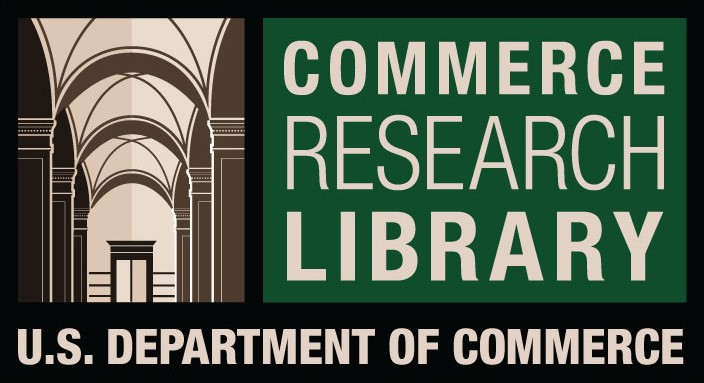The role of brand trust as a mediator in the relationship between brand satisfaction and purchase intention
DOI:
https://doi.org/10.61841/wq1jab71Keywords:
brand satisfaction, brand trust, purchase intention, PLSAbstract
The present purpose of this study was to empirical research on the role of brand trust as a mediator in the connection between brand satisfaction and purchase intention. We tested research data from 255 customers at laptop shops in Ho Chi Minh, Vietnam. PLS - Partial Least Squares was implemented to evaluate the measurement model and the structural model. The result of the investigation explained that brand satisfaction had a positive impact on brand trust and purchase intention. The findings also revealed that brand trust had a positive influence on purchase intention. Furthermore, the results also disclosed that brand trust had a mediator variable in the relationship between brand satisfaction and purchase intention.
Downloads
References
[1] Keller, K. L., & Lehmann, D. R. (2006). Brands and branding: Research findings and future priorities.
Marketing Science, 25(6), 740–759. https://doi.org/10.1287/mksc.1050.0153
[2] Hawkins, D. I., & Mothersbaugh, D. L. (2010). Consumer Behavior - Building Marketing Strategy (11th ed.). New York.
[3] Fianto, A. Y. A., Hadiwidojo, D., Aisjah, S., & Solimun. (2014). The Influence of Brand Image on Purchase Behaviour Through Brand Trust. Business Management and Strategy, 5(2), 58. https://doi.org/10.5296/bms.v5i2.6003
[4] Asadollahi, A., Jani, M., Mojaveri, P. P., & Allahabadi, F. B. (2012). Investigating the effect of brand satisfaction, brand trust and brand attachment on purchase behavior of customers. Research Journal of Applied Sciences, Engineering and Technology, 4(17), 3182–3187.
[5] Fournier, S., & Yao, J. L. (1997). Reviving brand loyalty: A reconceptualization within the framework of consumer-brand relationships. International Journal of Research in Marketing, 14(5), 451–472. https://doi.org/10.1016/s0167-8116(97)00021-9
[6] Zboja, J. J., & Voorhees, C. M. (2006). The impact of brand trust and satisfaction on retailer repurchase intentions. Journal of Services Marketing, 20(6), 381–390. https://doi.org/10.1108/08876040610691275
[7] Cuong, D. T. (2020). The Impact of Brand Credibility and Perceived Value on Customer Satisfaction and Purchase Intention at Fashion Market. Journal of Advanced Research in Dynamical and Control Systems, 12(SP3), 691–700. https://doi.org/10.5373/jardcs/v12sp3/20201308
[8] Chae, H., Kim, S., Lee, J., & Park, K. (2020). Impact of product characteristics of limited edition shoes on perceived value, brand trust, and purchase intention; focused on the scarcity message frequency. Journal of Business Research, 1–9. https://doi.org/10.1016/j.jbusres.2019.11.040
[9] Chinomona, R. (2013). The Influence Of Brand Experience On Brand Satisfaction, Trust And Attachment In South Africa. International Business & Economics Research Journal (IBER), 12(10), 1303–1316. https://doi.org/10.19030/iber.v12i10.8138
[10] Tsiotsou, R. (2006). The role of perceived product quality and overall satisfaction on purchase intentions. International Journal of Consumer Studies, 30(2), 207–217. https://doi.org/10.1111/j.1470- 6431.2005.00477.x
[11] Nodira, Z., & Premysl, P. (2017). The Effects on Purchase Intention: The Case of Fruit Juice. Journal of Competitiveness, 9(3), 111–128. https://doi.org/10.7441/joc.2017.03.08
[12] Aydin, G., AR, A. A., & Taskin, C. (2014). The Role of Brand Trust on Parents Purchase Intentions of Baby- Care Products. Doğuş Üniversitesi Dergisi, 2(15), 165–180. https://doi.org/10.31671/dogus.2018.84
[13] Fishbein, M., & Ajzen, I. (1975). Belief, attitude, intention and behavior: An introduction to theory and research. MA: Addison-Wesley Publishing Co.
[14] Kim, A. J., & Ko, E. (2012). Do social media marketing activities enhance customer equity? An empirical study of luxury fashion brand. Journal of Business Research, 65(10), 1480–1486. https://doi.org/10.1016/j.jbusres.2011.10.014
[15] Martín-Consuegra, D., Faraoni, M., Díaz, E., & Ranfagni, S. (2018). Exploring relationships among brand credibility, purchase intention and social media for fashion brands: A conditional mediation model. Journal of Global Fashion Marketing, 9(3), 237–251. https://doi.org/10.1080/20932685.2018.1461020
[16] Wu, P. C. S., Yeh, G. Y. Y., & Hsiao, C. R. (2011). The effect of store image and service quality on brand image and purchase intention for private label brands. Australasian Marketing Journal, 19(1), 30–39. https://doi.org/10.1016/j.ausmj.2010.11.001
[17] Fandos, C., & Flavián, C. (2006). Intrinsic and extrinsic quality attributes, loyalty and buying intention: An analysis for a PDO product. British Food Journal, 108(8), 646–662. https://doi.org/10.1108/00070700610682337
[18] Dodds, W. B., Monroe, K. B., & Grewal, D. (1991). Effects of Price, Brand, and Store Information on Buyers'
Product Evaluations. Journal of Marketing Research, 28(3), 307. https://doi.org/10.2307/3172866
[19] Schiffman, L. G., & Kanuk, L. L. (2000). Consumer Behavior. New York: Prentice Hall.
[20] Kotler, P. (2003). Marketing Management (11th ed.). New Jersey: Prentice Hall.
[21] Şahin, A., Kitapçi, H., & Zehir, C. (2013). Creating Commitment, Trust and Satisfaction for a Brand: What is the Role of Switching Costs in Mobile Phone Market? Procedia - Social and Behavioral Sciences, 99, 496–
502. https://doi.org/10.1016/j.sbspro.2013.10.518
[22] Wantara, P. (2015). International Journal of Economics and Financial Issues The Relationships among Service Quality, Customer Satisfaction, and Customer Loyalty in Library Services. International Journal of Economics and Financial Issues, 5(5), 10–11. Retrieved from http:www.econjournals.com
[23] Anderson, E. W., Fornell, C., & Lehmann, D. R. (1994). Customer Satisfaction, Market Share, and Profitability: Findings from Sweden. Journal of Marketing, 58(3), 53. https://doi.org/10.2307/1252310
[24] Garbarino, E., & Johnson, M. S. (1999). The Different Roles of Satisfaction, Trust, and Commitment in Customer Relationships. Journal of Marketing, 63(April 1999), 70–87.
[25] Şahin, A., Zehir, C., & Kitapçi, H. (2011). The effects of brand experiences, trust and satisfaction on building brand loyalty; An empirical research on global brands. Procedia - Social and Behavioral Sciences, 24, 1288– 1301. https://doi.org/10.1016/j.sbspro.2011.09.143
[26] Chinomona, R., Mahlangu, D., & Pooe, D. (2013). Brand service quality, satisfaction, trust and preference as predictors of consumer brand loyalty in the retailing industry. Mediterranean Journal of Social Sciences, 4(14), 181–190. https://doi.org/10.5901/mjss.2013.v4n14p181
[27] Shin, S. K. S., Amenuvor, F. E., Basilisco, R., & Owusu-Antwi, K. (2019). Brand Trust and Brand Loyalty: A Moderation and Mediation Perspective. Current Journal of Applied Science and Technology, 38(4), 1–17. https://doi.org/10.9734/cjast/2019/v38i430376
[28] Delgado-Ballester, E., Munuera-Aleman, J. L., & Yague-Guillen, M. J. (2003). Development and Validation of a Brand Trust Scale. International Journal of Market Research, 45(1), 35–53. https://doi.org/10.1177/147078530304500103
[29] Chaudhuri, A., & Holbrook, M. B. (2001). The Chain of Effects from Brand Trust and Brand Affect to Brand Performance: The Role of Brand Loyalty. Journal of Marketing, 65(2), 81–93.
[30] Doney, M., & Cannon, J. P. (1997). Trust Examination of the Nature of in Buyer-Seller Relationship for assistance. Journal of Marketing, 61(2), 35–51.
[31] Lau, G. T., & Lee, S. H. (1999). Consumers' Trust in a Brand and the Link to Brand Loyalty. Journal of Market Focused Management, 4(1999), 341–370.
[32] Saragih, M. G., Surya, E. D., Rahayu, S., Harianto., Harahap, R., & Widodo, S. (2019). Analysis Of Brand Experience And Brand Satisfaction With Brand Loyalty Through Brand Trust As A Variable Mediation. In Proceedings of the 5th International Conference of Project Management (ICPM) Yogyakarta 2019 (pp. 139– 148). Retrieved from https://ejournal.aibpm.org/index.php/JICP/article/view/655/643
[33] Endah, P. E., Umar, N., Suharyono, & Adriani, K. (2017). Study on Destination Image, Satisfaction, Trust and Behavioral Intention. Russian Journal of Agricultural and Socio-Economic Sciences, 61(1), 148–159. https://doi.org/10.18551/rjoas.2017-01.15
[34] Wardani, D., & Gustia, R. R. (2016). Analysis of Brand Experience, Brand Satisfaction and Brand Trust Relationship to Brand Attachment. Jurnal Ilmu Manajemen & Ekonomika, 9(1), 59–72. https://doi.org/10.35384/jime.v9i1.20
[35] Sanny, L., Arina, A. N., Maulidya, R. T., & Pertiwi, R. P. (2020). Purchase intention on Indonesia male's skin care by social media marketing effect towards brand image and brand trust. Management Science Letters, 10,
2139–2146. https://doi.org/10.5267/j.msl.2020.3.023
[36] Oliver, R. L. (1980). A Cognitive Model of the Antecedents and Consequences of Satisfaction Decisions.
Journal of Marketing Research, 17(4), 460–469. https://doi.org/10.2307/3150499
[37] Cuong, D. T. (2020). The effect of brand identification and brand trust on brand commitment and brand loyalty at shopping malls. International Journal of Advanced Science and Technology, 29(7 Special Issue), 695–706.
[38] Mathur, A. (1999). Incorporating Choice into an Attitudinal Framework. Journal of International Consumer Marketing. https://doi.org/10.1300/j046v10n04_06
[39] Hair, J. F., Hult, G. T. M., Ringle, C. M., & Sarstedt, M. (2017). A Primer on Partial Least Squares Structural Equation Modeling (PLS-SEM) (2nd ed.). Los Angeles: SAGE Publications, Inc.
[40] Sarstedt, M., Ringle, C. M., & Joseph F. Hair. (2017). Partial least squares structural equation modeling (PLS-SEM). Handbook of Market Research. Springer International Publishing. https://doi.org/10.1108/EBR- 10-2013-0128
[41]. Bagozzi, R. P., & Yi, Y. (1988). On the Evaluation of Structural Equation Models. Academy of Marketing Science, 16(1), 74–94.
[42] Fornell, C., & Larcker, D. F. (1981). Evaluating Structural Equation Models with Unobservable Variables and Measurement Error. Journal of Marketing Research, 18(1), 39.
[43] Garson, G. D. (2016). Partial least squares: Regression & structural equation models (2016 ed.). Asheboro: Statistical Associates Publishers.
[44] Chin, W. W. (1998). The partial least squares approach to structural equation modeling. In G. A. Macoulides (Ed.), Modern Methods for Business Research (pp. 295–336). New Jersey: Lawrence Erlbaum Associates.
[45] Cohen, J. (1988). Statistical power analysis for the behavioral sciences. New Jersey: Lawrence Erlbaum Associates.
Downloads
Published
Issue
Section
License

This work is licensed under a Creative Commons Attribution 4.0 International License.
You are free to:
- Share — copy and redistribute the material in any medium or format for any purpose, even commercially.
- Adapt — remix, transform, and build upon the material for any purpose, even commercially.
- The licensor cannot revoke these freedoms as long as you follow the license terms.
Under the following terms:
- Attribution — You must give appropriate credit , provide a link to the license, and indicate if changes were made . You may do so in any reasonable manner, but not in any way that suggests the licensor endorses you or your use.
- No additional restrictions — You may not apply legal terms or technological measures that legally restrict others from doing anything the license permits.
Notices:
You do not have to comply with the license for elements of the material in the public domain or where your use is permitted by an applicable exception or limitation .
No warranties are given. The license may not give you all of the permissions necessary for your intended use. For example, other rights such as publicity, privacy, or moral rights may limit how you use the material.









